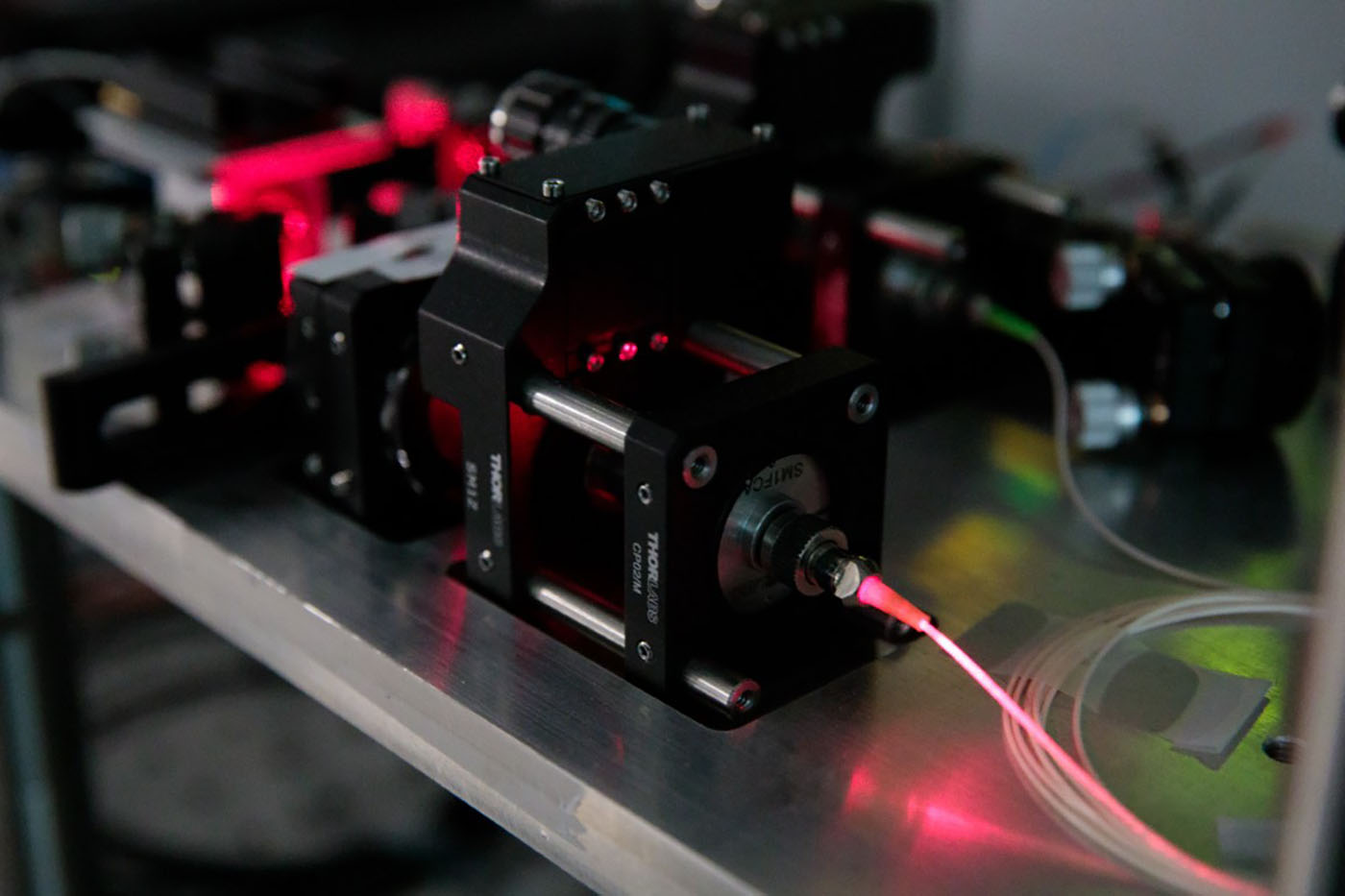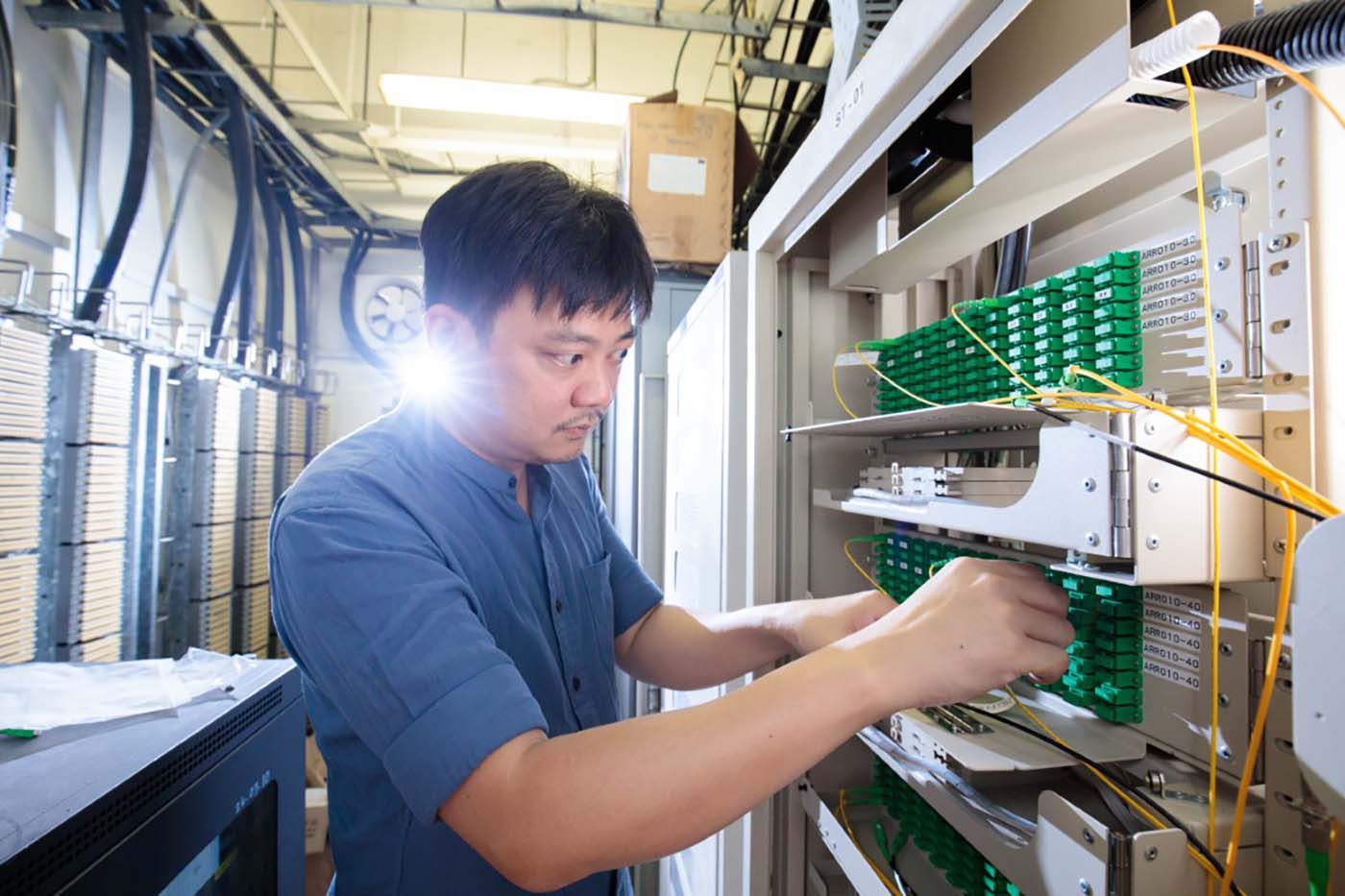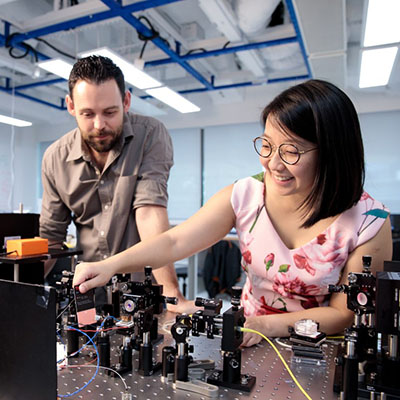Highlights
First QKD demonstration over commercial fibre in Singapore shows promise
 The entangled photon source designed and built by the researchers produces light at a wavelength of 1316 nm. Potentially, this could allow QKD and classical internet traffic to run on the same fibre.
The entangled photon source designed and built by the researchers produces light at a wavelength of 1316 nm. Potentially, this could allow QKD and classical internet traffic to run on the same fibre.
Underground optical fibres in Singapore carry data to millions of homes and offices. Now research carried out by a team at the Centre for Quantum Technologies, working with Singtel, Asia’s leading communications technology group, confirms the commercial fibres could carry quantum keys too.
Quantum key distribution (QKD), which offers a way to secure communication, is under trial worldwide as governments and companies seek to strengthen their cyber security.
The CQT team performed a demonstration of entanglement-based quantum key distribution (QKD) over 10km of Singtel’s fibre. In a paper published on 22 September in Applied Physics Letters, the team report achieving a final key rate of 109 bits per second.
At this rate, the team say, the system could directly encrypt low bandwidth communication such as command and control of industrial systems or be used as input for fast encryption schemes such as AES-256. There is also a clear path to boosting the key rate.
The researchers are working in the NUS-Singtel Cyber Security Research & Development Laboratory, a public-private partnership supported by the National Research Foundation, Prime Minister’s Office, Singapore.
Stable fibres
In other countries, QKD trials have involved trusted relays and satellites to make long-distance links, because quantum signals have a limited range over fibre. For a small metropolitan area like Singapore, however, a national quantum network could make use of existing infrastructure.
For the trial on Singtel’s fibres, the team designed and built a light source that creates pairs of entangled photons. Each pair of photons is split up and sent to two endpoints. When these photons are measured, the results for each pair, either 1 or 0, should match because of the entanglement. Measurements on many pairs of entangled photons build a shared key of 1s and 0s, which can then be used to encrypt and decrypt messages. It works providing the photons’ properties survive their journey through the fibre.
Checking how the entangled photons performed in the real world was an important goal of the research. “This is one of the steps to move QKD from research to applications – to assess the impact of environmental factors you have in deployed telecom fibre,” says CQT Principal Investigator Christian Kurtsiefer, who is a co-author of the paper. The other authors of the paper are Shi Yicheng, Soe Moe Thar, Poh Hou Shun, James Grieve and Alexander Ling.
 The main distribution frame room is the start and end point for the 10km Singtel fibre loops. Here, CQT Research Fellow Poh Hou Shun connects the lab fibres to Singtel’s fibres.
The main distribution frame room is the start and end point for the 10km Singtel fibre loops. Here, CQT Research Fellow Poh Hou Shun connects the lab fibres to Singtel’s fibres.
A surprise finding was that the fibres were very stable. The team implemented a QKD scheme that is based on the polarisation of the photons, but they knew that twisting or stress in optical fibres can rotate polarisation. The team expected to need to compensate for these effects using liquid crystal devices to apply counter-rotations.
Hou Shun, a Research Fellow at CQT, says, “We expected the compensation scheme to run continuously. But it turns out that we only needed to do it once at the very beginning of the QKD operation.” The QKD was carried out over 5.7 hours.
Boosting the key rate
Entanglement-based QKD typically has a lower key rate than some alternative, already commercialised QKD protocols, but it offers security advantages. The entanglement-based schemes have fewer possible ‘side channels’ for attack and do not require a trusted random number generator to operate. Side channels are ways that information may leak out, arising from details of the physical implementation of a QKD scheme.
To boost the key rate, the team propose changing how the photons are detected. In the demonstration they used conventional avalanche photodiodes which have a detection efficiency of only about 10%, but they could swap to superconducting nano-wire detectors, offering about 80% detection efficiency.
Earlier, the team had decided to create entangled photons centred at a wavelength of 1316nm wavelength, instead of the 1550nm wavelength which is the more commonly used telecom channel. This helps to minimise an unhelpful effect known as ‘chromatic dispersion’, which can reduce key rate.
“Using 1316 nm photons also opens up an interesting possibility and a practical advantage,” says Yicheng, a CQT PhD student and first author of the paper. “We would be able to run QKD and classical internet data traffic on the same fibre – QKD at 1316 nm, and internet at 1550 nm.”
The demonstration was performed on one loop of dark telecom fibre, which is part of Singtel’s fibre network but not currently in use. Next steps for the team will include testing compatibility of carrying normal telecom traffic alongside quantum traffic and experimenting with switching technology that can route QKD between several endpoints.
Learn more
Related Stories
 | Photons trained for optical fibre obstacle course will deliver stronger cyber security April 05 2019 |
 | Bringing quantum tech to new NUS-Singtel corporate lab October 24 2016 |






